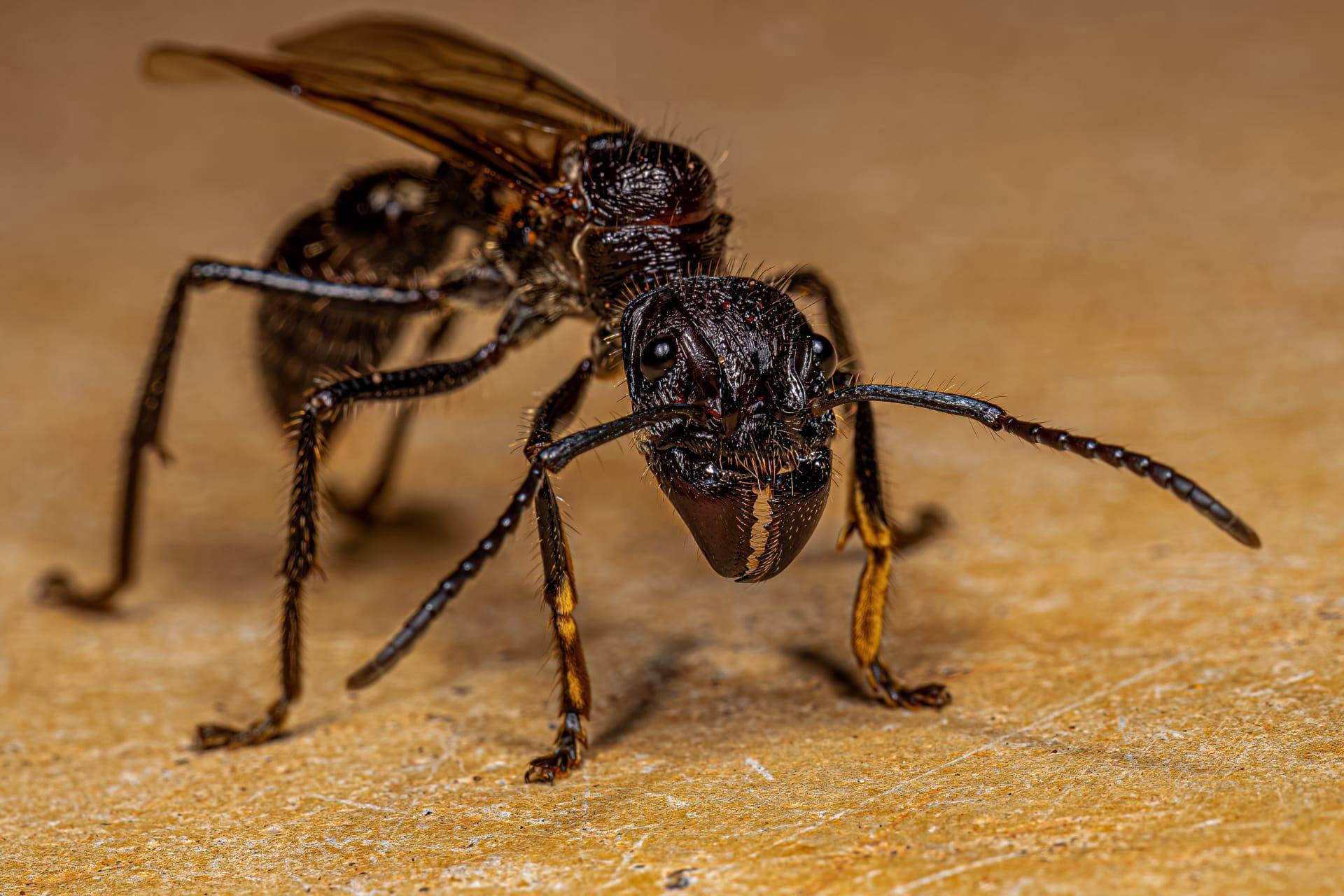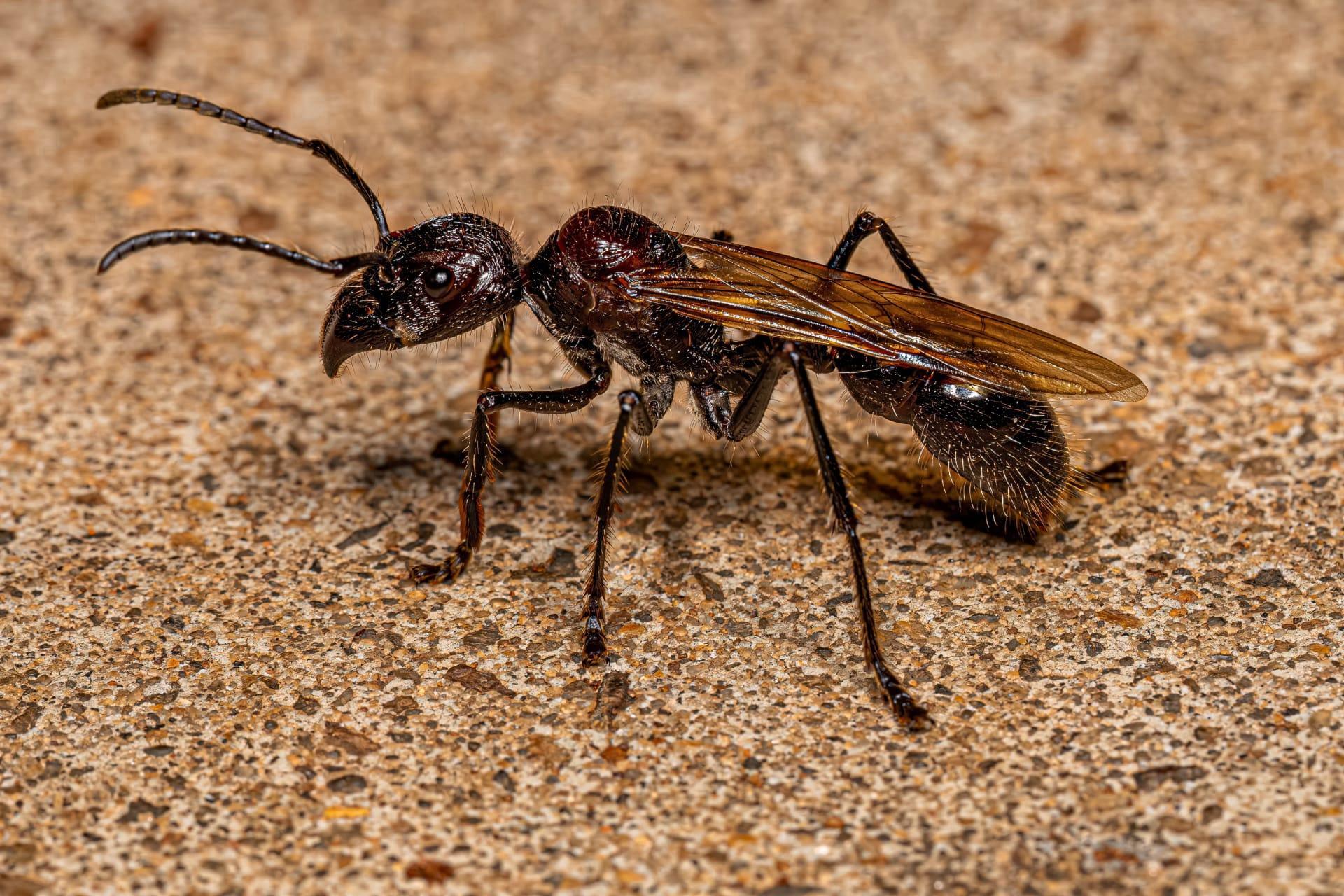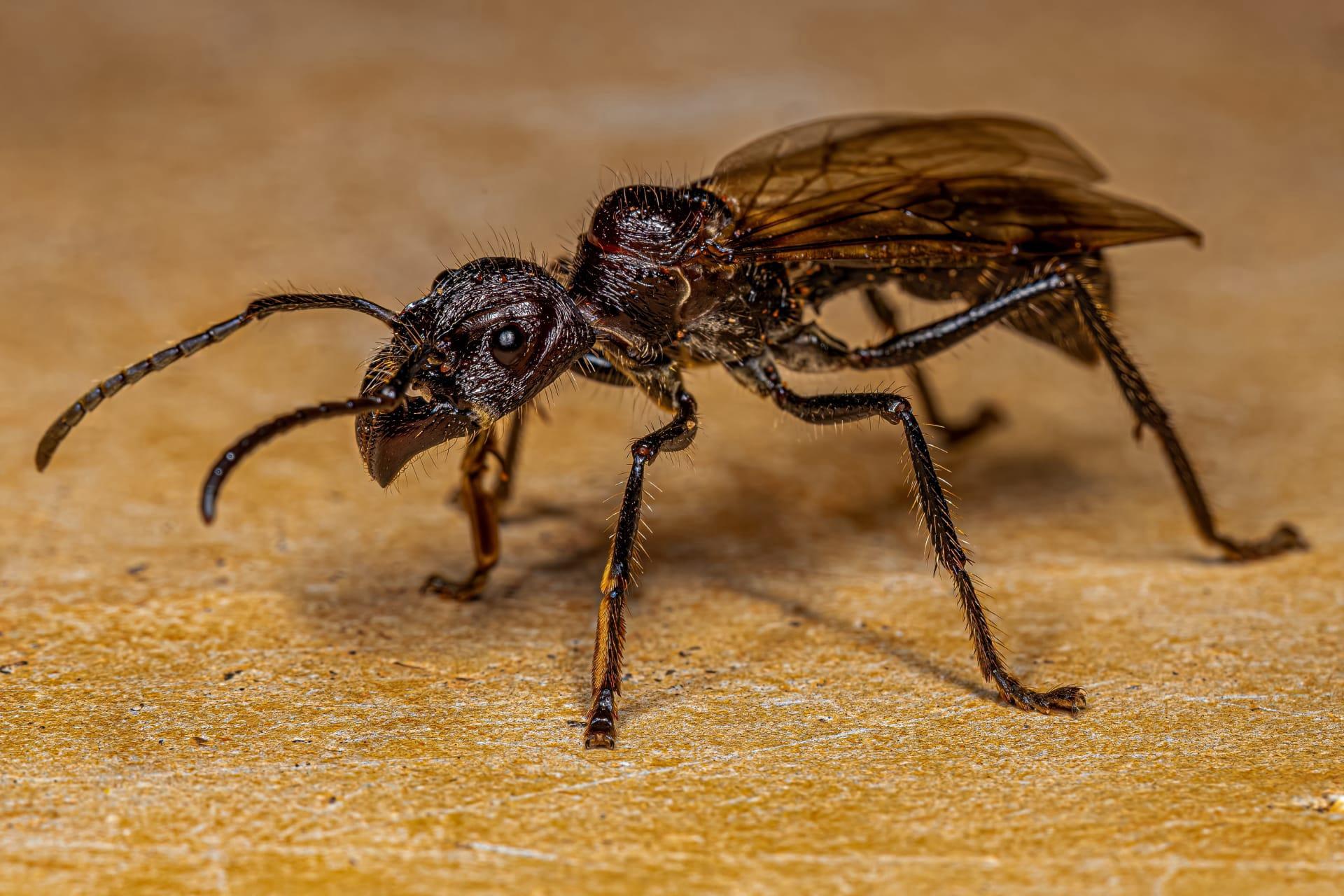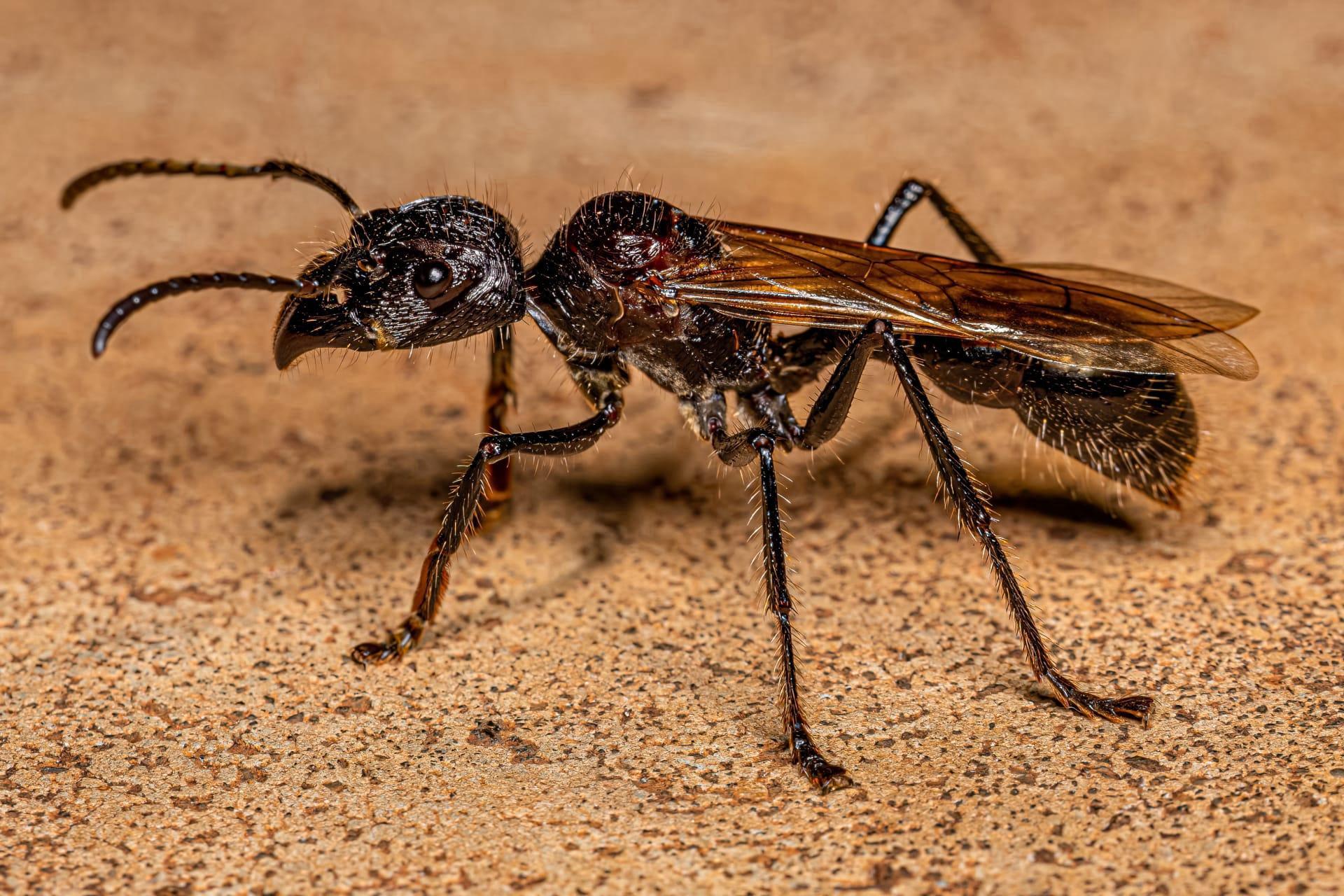Bullet Ant
- Home /
- Mini Encyclopedia /
- Animal /
- Bullet Ant
1
The Bullet Ant, scientifically known as Paraponera clavata, belongs to the family Formicidae, under the order Hymenoptera, which also includes bees and wasps. This species is renowned for its large size, with workers measuring up to 1.2 inches (3 centimeters) in length. Its name, 'Bullet Ant', stems from the intense pain its sting can cause, comparable to the feeling of being shot. The ant's physical characteristics include a dark, reddish-black coloration and a robust, segmented body structure typical of ants, with a pronounced mandible and a venomous stinger.
The distribution of the Bullet Ant is predominantly in the rainforests of Central and South America. These ants are commonly found from Nicaragua down through the humid lowland regions of the Amazon rainforest in countries like Brazil, Peru, and Venezuela. They thrive in wet, tropical environments, often nesting at the base of trees. Their nests can be identified by a clear, circular area on the forest floor, devoid of leaf litter, leading to the underground nest. Bullet Ants prefer areas with abundant foliage, as they are arboreal, spending a significant amount of time foraging in trees for nectar and small insects.

2
Question: Do Bullet Ants attack humans unprovoked?
Answer: Contrary to popular belief, Bullet Ants are not aggressive towards humans unless provoked. They are primarily defensive creatures, resorting to their painful sting only when their nest is disturbed or when they feel threatened. Their sting, while excruciatingly painful, is not fatal to humans unless an allergic reaction occurs. The pain from the sting, caused by a neurotoxic peptide called poneratoxin, is reported to last for up to 24 hours. Despite the pain, the sting has relatively low toxicity, and there are no long-term adverse effects. This makes the Bullet Ant's sting a defensive mechanism rather than an aggressive tool.

3
Bullet Ants have developed several survival strategies to thrive in their environments. One notable strategy is their cooperative hunting and foraging behavior. They often work in groups to take down larger prey, such as insects and small vertebrates, which are then carried back to the nest to feed the colony. This social behavior is crucial for the survival of the entire colony, ensuring a steady food supply. Additionally, their diet is varied, including nectar, which they gather from flowers, providing them with essential nutrients.
Another significant survival strategy is their nesting behavior. Bullet Ants construct their nests underground, often at the base of large trees. This location provides a stable temperature and humidity, essential for the survival of the queen and her eggs. The ants also create multiple entrances to their nests, which serve as escape routes in case of danger, and to facilitate the movement of workers in and out of the nest. This architectural complexity reflects their advanced social organization and contributes to their resilience in the rainforest ecosystem.

4
In the ecosystem, Bullet Ants play a vital role in maintaining the balance of their rainforest habitat. Their predatory behavior helps regulate the populations of other insects and small invertebrates, preventing any single species from becoming overly dominant. This control is crucial for the health of the rainforest, as it ensures a diverse and balanced ecosystem. Bullet Ants also contribute to seed dispersal through their foraging activities, aiding in the spread of various plant species.
Furthermore, Bullet Ants are an integral part of the food web. They serve as prey for various birds, reptiles, and larger insects. This predation contributes to the regulation of their population, preventing overpopulation and ensuring a balance within the ecosystem. Additionally, their nesting behavior, particularly the creation of underground nests, aids in soil aeration and nutrient cycling, further contributing to the health of the rainforest floor.

5
Film: "Empire of the Ants" (United States, 2013) offers a fascinating glimpse into the world of ants, including the Bullet Ant. This documentary explores the complex social structures and behaviors of various ant species, highlighting the Bullet Ant's unique pain-inducing sting and its role in indigenous rituals.
Book: "The Sting of the Wild" (United States, 2016) by Justin O. Schmidt. This book delves into the world of stinging insects, with a significant focus on the Bullet Ant. Schmidt, an entomologist, shares his experiences and scientific insights, providing a comprehensive overview of the pain scale associated with various insect stings, including the notorious Bullet Ant.
Book: "Insects and Human Life" (United Kingdom, 2005) by Brian Morris. This book explores the cultural and ecological significance of insects, including the Bullet Ant. Morris examines the role of these insects in human culture, mythology, and the environment, offering a broader perspective on the Bullet Ant's impact beyond its painful sting.